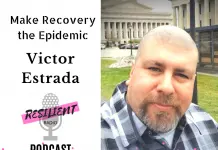
Hi……………My name is …………..and I ……………am an Enabler.
In my most recent article, I spoke a bit of what enabling means and what behaviors would be considered enabling. Even if one has a good grasp on the fact that they are enabling another, there still remains the problem of fixing enabling behaviors.
As I mentioned previously, enabling others can become a form of addiction. When I say addiction I am referring to an addictive pattern in relationships. An enabler often finds they are unable to stop despite knowing they have a problem enabling others or a clear denial is expressed. An excellent blog, Sharon Martin, LCSW (2016), shares a handful of ways in which an enabler can begin to change their typical behavior. She first emphasizes a fact that enablers may find troubling: detachment is a key to overcoming enabling. Let’s look into detachment more.
The word detachment carries many negative connotations that may seem unappealing. However, let’s consider the implications of detachment regarding its context in ending enabling behaviors. To detach is to let go.
What are you letting go of?
1. You are letting go of the responsibility of taking care of another person who is completely capable.
2. You are letting go of cleaning up other’s mistakes and bad choices.
Perhaps for the first time in many years, you are making a conscious choice to put your needs first and let come what may. Let’s keep going………
Overcoming Denial
Sharon Martin, LCSW, mentions overcoming denial as another step to gaining freedom from enabling. So how does that work? Simple, you need direct help from someone who can see the situation for what it is without bias. Your friends, your spouse, and your loved ones are probably great sources of support, comfort, and advice; however, there is an unspoken limitation concerning their ability to give you direct feedback and honesty. Either they do not want to hurt your feelings or they too are unable to recognize enabling behaviors. Seeking help from a qualified professional can open your eyes to the unhealthy relationship patterns you have been engaging in, and it could change your life for the better.
Manage Your Own Anxiety
Lastly, find ways to manage your anxiety (2016). If you find yourself in a constant state of worry or “what ifs,” then it may be time, to be honest with yourself. How much energy do you spend per day worrying about anticipated tragedies of others in your life that are entirely capable of taking care of themselves? Do you find yourself waiting for another phone call requesting your help? Often, those who enable are riddled with anxiety and anticipation of future events. Enabling is a very unhealthy way of managing anxiety and worry.
Enabling provides short-term relief from guilt, shame, and anxiety. It provides temporary functionality to a dysfunctional relationship. Anxiety can be tricky to alleviate and find solutions to. Many who have anxiety often see their anxiety as a tool for finding a solution to a problem and may find themselves unable to quit worrying unless they do something about it.
So, instead of relying on enabling to alleviate anxiety, it may be time to explore what your anxiety means and what changes you can make. Meditation and mindfulness practices may be another tool to look into.
Enabling is not easy to overcome and recognize, but there is hope still.
If you or someone you know is caught in the cycle of enabling, then do not hesitate to reach out to Tennessee Advocacy Talk. We have an excellent group of professionals that can help guide you to put an end to enabling others. It’s time to find yourself again, and it’s time to live the life you have envisioned for yourself: balanced and whole.
References
https://blogs.psychcentral.com/imperfect/2016/12/how-to-stop-enabling/





















